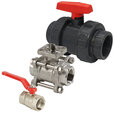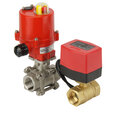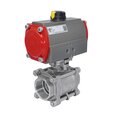Valves for Swimming Pools
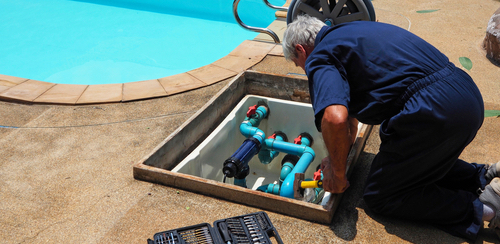
Figure 1: Pool valves
Valves are an integral part of a swimming pool plumbing system. Pool valves ensure that water passes through the filter while also preventing the dirt and debris from the filtered water from flowing back into the swimming pool. This article discusses the main types of pool valves used at various points within a pool plumbing system.
Table of contents
- What is a pool valve?
- Pool valve housing materials
- Pool valve seal materials
- Types of pool valves
- FAQs
View our online selection of ball valves!
What is a pool valve?
The plumbing system of a pool ensures that the water stays clean. To accomplish this, a pool plumbing system has three main parts ensuring automatic circulation and filtration of pool water:
- Suction side: Pulls the water into the circulatory system and includes the skimmers (small openings built on the poolside), main drains, and suction lines.
- Filter system: Processes and cleans the water pulled in from the suction side. The system includes a pre-filter, pump, filter, heater, and chlorinator.
- Return side: Pushes the processed water back into the pool. The return side consists of return lines and jets.
Filtration and water circulation are key processes for maintaining a healthy body of water in a swimming pool and keeping it free from debris and contaminants. Pool valves help with these processes by helping the media move in the right direction at the right point.
A pool valve is a mechanical component that regulates the direction of water flow in a swimming pool plumbing system. When water flows to and from the pool and inside the pool plumbing system, the valves regulate water flow. Pool valves work by directing water flow from the swimming pool to the filter and heater and then back to the swimming pool.
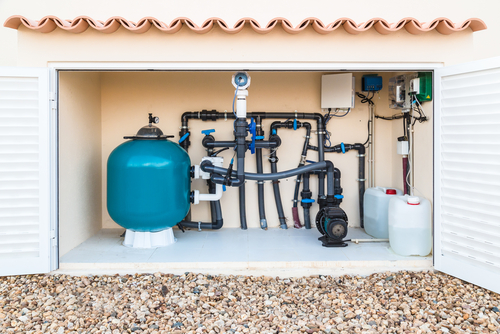
Figure 2: Swimming pool plumbing system showing ball valves at multiple locations
Pool valve housing materials
When choosing materials for pool valves, it's essential to consider the chemical environment, temperature conditions, and mechanical requirements to ensure durability and optimal performance. Pool water is typically treated with chlorine or bromine, which can be corrosive to certain materials. Therefore, selecting materials that are resistant to these chemicals is crucial. Stainless steel and plastic materials like PVC or PP are commonly used for the valve body.
Chemical compatibility
The housing material for pool valves must be compatible with water treated with chlorine and bromine. Stainless steel 316 is commonly used in pool environments due to its resistance to corrosion in low-chloride conditions, which are typical in swimming pools. However, it is unsuitable for environments with high concentrations of hydrochloric acids, chlorides, bromine, or household bleach. PVC (Polyvinyl Chloride) is a better choice for applications involving high concentrations of sodium hypochlorite due to its superior chemical resistance. Read our chemical resistance guide for more details on the compatibility of different materials with various media.
Temperature requirements
Consider the operating temperature range when selecting valve materials. PVC suits most pool environments, handling temperatures up to 60°C (140°F). However, stainless steel or polypropylene (PP) may be necessary for higher temperature resistance applications.
Mechanical strength
For high-pressure applications, stainless steel provides superior mechanical strength. In standard pool systems, where pressure demands are lower, PVC or PP is often sufficient and provides a cost-effective solution.
Cost considerations
PVC and PP are generally more cost-effective than stainless steel, making them attractive options for budget-conscious projects. They offer a good balance of chemical resistance and mechanical properties at a lower cost.
Pool valve seal materials
- EPDM is widely used due to its excellent resistance to water, chlorine, and mild acids, making it ideal for pool environments. It offers flexibility, resilience, and resistance to UV and ozone. However, it is not suitable for use with oils or hydrocarbons.
- FKM provides superior chemical resistance and can withstand higher temperatures, making it suitable for environments with bromine. It also offers excellent resistance to aging and weathering, although it is more expensive than EPDM and may not be necessary for all applications.
Types of pool valves
Gate valves, ball valves, and check valves are commonly used within a swimming pool plumbing system. To identify a pool valve, look at the valve’s shape and function.
Gate valves
Gate valves are perpendicular to piping and regulate the water flow's direction via a rotational mechanism. Gate valves are typically used to open or close the swimming pool supply lines.
Pool ball valves
Ball valves are efficient quarter-turn shutoff valves that are easier to install and maintain than gate valves. Ball valves can be actuated either manually by operating the lever or pneumatically or electrically through an external actuator enabling automated valve operation. Read our article on pneumatic and electric ball valves for more details. The ball valve configurations used at various points of a swimming pool plumbing system are as follows:
Multiport ball valves
A multiport pool ball valve attaches to the plumbing system's filter. It serves three essential purposes:
- Directing water through the filter for cleaning.
- Running water backward through the filter to clean it and remove the collected debris.
- Expelling water from the pool when vacuuming out waste.
A multiport ball valve in a pool’s plumbing system can also recirculate water without filtering it or using a booster pump. It also comes with a winter setting that prevents water from flowing into the pipes and freezing, resulting in blockages and other damages. The valve can be closed when clearing the lines to open the pool.
Diverter ball valves
A diverter ball valve allows redirecting the water flow from one area of the plumbing system to another spot, for example, diverting water from the filter to the heater or shifting the heated water back into the swimming pool. A diverter ball valve can be used as an in-ground and above-ground pool ball valve. Also, this ball valve can be a true union type or a free-floating type.
3-way ball valves
3-way diverter ball valves feature three ports. The water arriving at port 1 can be moved to outlet ports 2 or 3 according to the requirement. These valves are typically used to turn the bottom drain skimmer off through one port or the other.
In general, 2-way ball valves are used for maintaining a straight fluid flow through the pipe, and 3-way pool valves are used for applications like mixing or distributing fluids. Read our article on ball valve circuit functions for more details on diverting ball valves.
Actuated ball valves
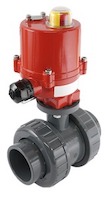
Figure 3: Electric actuated PVC ball valve
Actuated valves use a power source to operate. The power source is typically electrical, and normally 24-volt actuators are used for most pool applications. Pool valve actuators have automated push-button commands that control one or more converter valves within the pool’s water flow system. The actuator can be installed on top of the diverter valve and hardwired into the pool’s control box. Simply flick the switch to redirect the water flow, and the valve operates as needed. This is particularly helpful to initiate the working of the pool pump that drives the water coming from the skimmer into the pool filter. This is a simple setup that saves a lot of time and manual effort in operating the valves.
Ball valves and gate valves are commonly used for controlling water flow through a swimming pool’s plumbing system. However, a ball valve enables fast water shut-off compared to a gate valve that typically has a slow shutoff mechanism. Read our article on gate valve vs ball valve for a more in-depth comparison between both valves.
Pool check valves
Typically, two types of check valves for a pool are used: a spring check valve and a flapper check valve. Spring check valves have a spring which assists with closing the valve and flapper check valves close automatically when flow through the pool check valve stops.
The water from a swimming pool passes through the main drain, and is pumped into the filter and heater. A pool check valve is installed near the main drain to prevent backflow of water into the tank once the pump stops, as this water can compromise the water quality in the tank. Other areas where check valves are used within a pool include:
- Automatic chlorinators: The automatic chlorinator is the last part of the plumbing system through which the water passes before flowing back into the swimming pool. The system automatically releases concentrated chlorine, cleansing and purifying the water. Then, the concentrated chlorine dilutes inside the pool. Concentrated chlorine is corrosive. It can damage some of the plumbing system's components when it flows back inside the system. Installing a check ball valve between the automatic chlorinator and other equipment prevents this.
- Pump: Pool check valves are needed to keep water within the pump when it shuts off. They are installed in front of the pump’s incoming suction pipe, ideally 18-24 inches before the pump.
- Solar heaters: Solar pool heaters work by circulating pool water through panels for continuous heating and temperature regulation. As seen in Figure 4, these panels are on the roof of a nearby building (e.g., house), or some similarly inclined structure near the pool, and a pump is required to pump the water up and into the pipes. When the pump stops, the water automatically flows back inside the pool. Acheck valve prevents the backward flow of water from the panels and back inside the swimming pool.
- Hot tubs:A check valve prevents the water in a hot tub from mixing with the pool water.
- Water features:Water features (like a fountain) integrated into the pool gets water from the pool or a secondary reservoir. The water from the reservoir shouldn't mix with the water inside the pool. Installing a check valve inside the water lines and pipes prevents the water from mixing.
Swimming pool check valve replacement may be necessary when a pool check valve fails, but simple maintenance may be all that is necessary. Debris can collect in check valves for pools. To remove debris from a spring check valve, loosen the collars to access and clear out any debris. Additionally, check that the valve’s o-rings are in good shape. For flapper check valves, remove the cover plate to access and clean the inside of the valve.
The typical lifespan of a pool check valve is around 5-7 years. Depending on the specific pool check valve used, replacement may consist of swapping out the worn o-rings for new ones, or changing the entire valve body. In the second case, be certain that the valve is facing in the correct direction as it is a unidirectional valve.
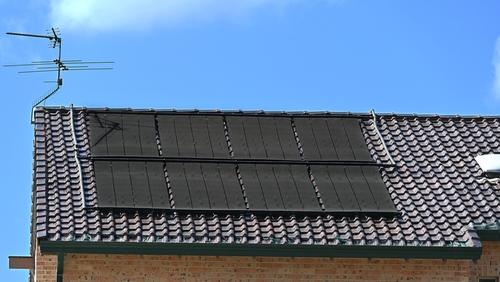
Figure 4: Swimming pool plastic solar heating panels.
FAQs
What does a swimming pool ball valve do?
A swimming pool ball valve regulates water flow in and out of the swimming pool and plumbing system. Ball valves help prevent damage to the plumbing equipment and ensure that the pool water is safe for swimming.
What materials make up a swimming pool ball valve?
Swimming pool ball valves are commonly made of four materials: PVC, stainless steel, chrome-plated steel, and chrome-plated brass.
How do I know if my pool valve is open?
Check the direction of the valve handle. The valve is open if the handle points in the same direction as the fluid flow and the valve is closed if the handle is perpendicular to the fluid flow.
What do all the valves on my pool do?
Pool valves control the water flow direction in and out of the pool and the various pool equipment like pump, filter, and heater.
What is a pool control valve?
A pool control valve controls the flow of water in a swimming pool system. It directs and controls the flow of water, assisting in the maintenance of optimal pool water circulation and pressure.
What is a pool backwash valve?
A pool backwash valve is used in pool filtration systems to reverse the flow of water and clear the filter of dirt and debris. It aids in the maintenance of healthy pool water circulation and purity.




